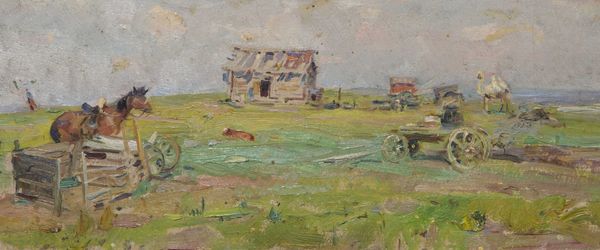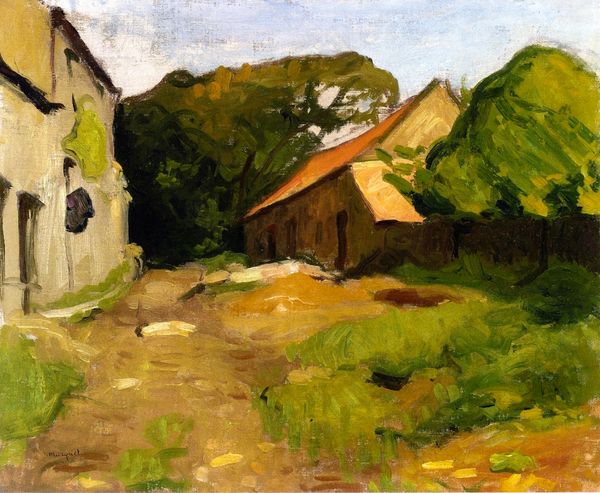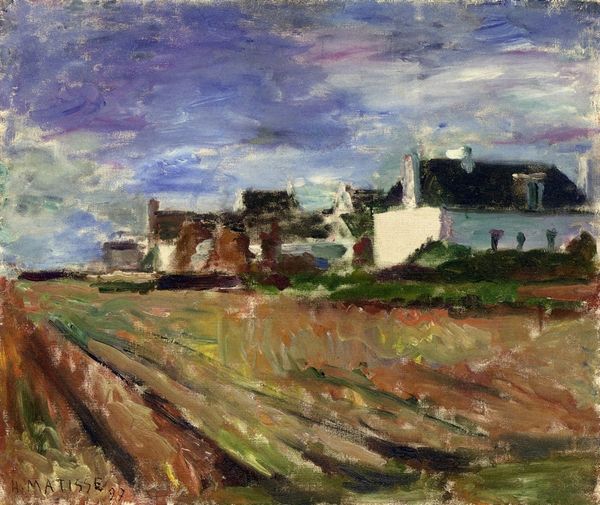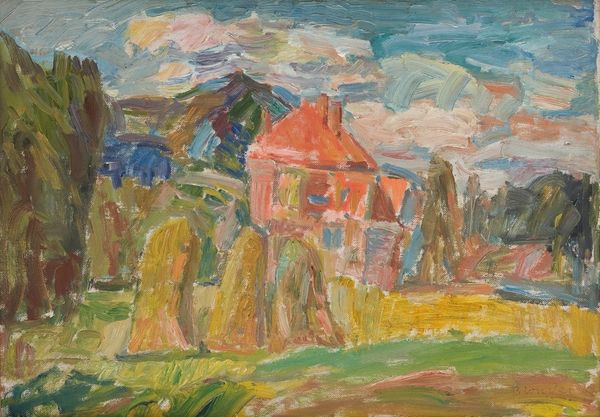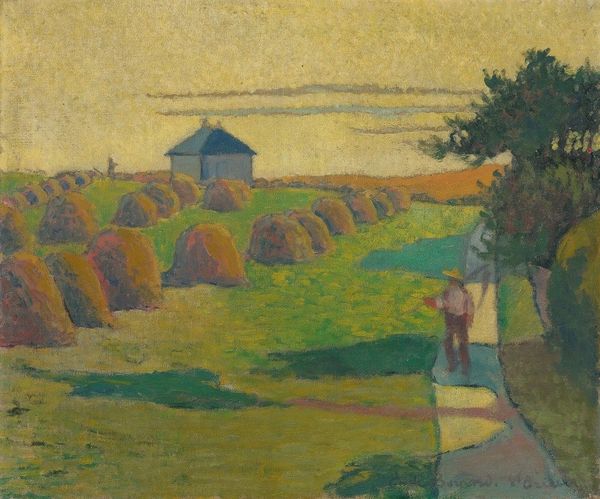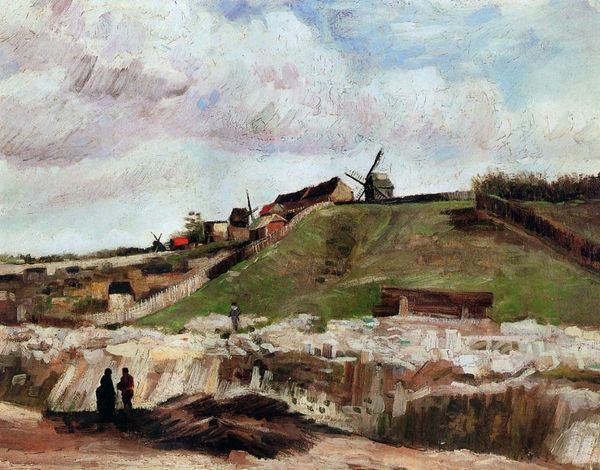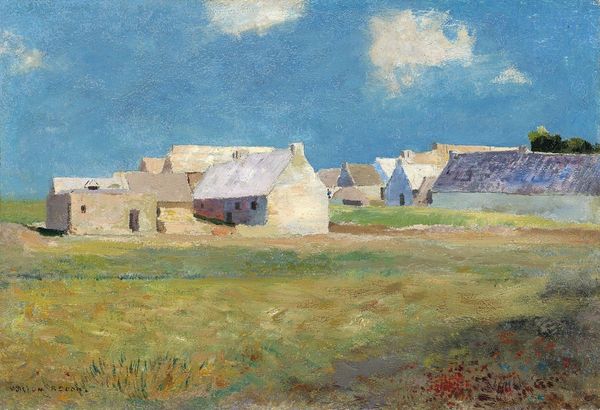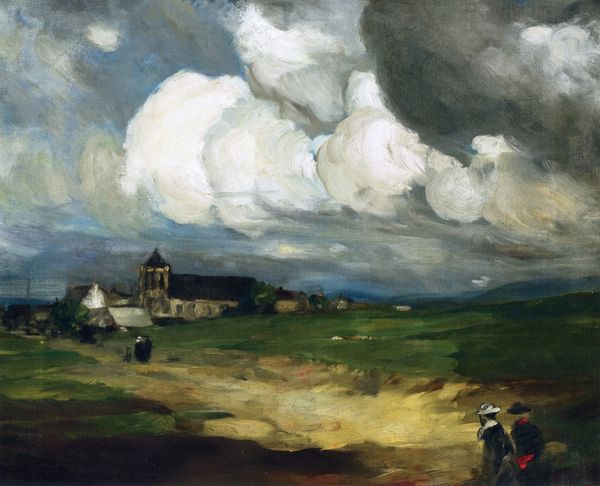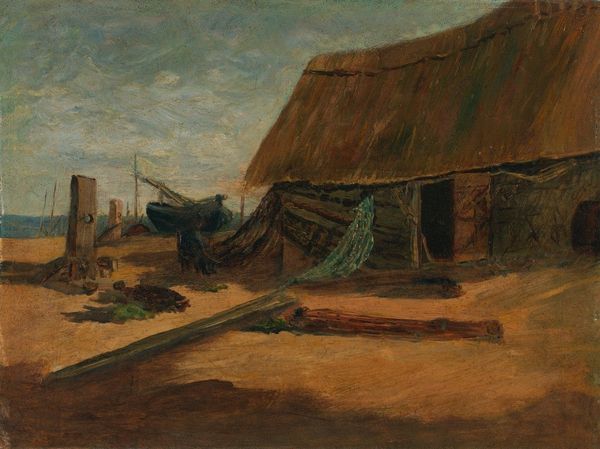
Copyright: Public domain US
Curator: This is Henri Matisse's "Paysage de Bretagne," painted in 1896. It's an oil-on-canvas piece, offering an early glimpse into his evolving artistic vision. Editor: My first impression is one of muted serenity. There’s a quiet, almost melancholic quality to the colors and composition, like a forgotten corner of the world. Curator: It's interesting to consider this painting in relation to Matisse's later, more radical works. Here, you see him engaging with Impressionist techniques, likely working en plein air, to capture the light and atmosphere of the region. We can examine the texture of the paint application and his manipulation of materials as a crucial early stage in his craft development. Editor: I see motifs that will re-emerge, that basic architecture set against a broader landscape: the roofline hints at human presence, coexisting with this mound on the land which carries symbolic meaning in Breton identity. Haystacks often signify harvest, abundance, and the cycle of life—though there is already some ambiguity or subversion. Is the field overgrown, poorly managed, something rotting even? Curator: It reflects a period when artists were exploring the changing relationships between rural labor, landscape, and artistic expression. Consider, too, how the rise of industrialization was affecting agrarian communities and how that’s materialized here. What was the provenance of his paint, his canvas at this point in time? How did access shape its visual style? Editor: The almost blurred edges and diffused light create a sense of transience. Note that distant windmill too, another possible suggestion of transition and cultural shift. The work captures that specific moment in time with its symbolism of traditional agriculture beginning to feel a touch eroded, perhaps by an onrushing modern world. Curator: Absolutely, the landscape as a site of shifting material realities and social practices. When we study works like this, the materiality of its creation becomes paramount: How was the landscape being used and experienced by different social actors? Editor: To sum up, what struck me initially as simply tranquil opens up to a much deeper resonance. There are seeds planted here in terms of subject matter and mood that bear reexamination. Curator: Agreed. Paying close attention to materiality gives a deeper awareness of shifting perspectives and artistic innovation.
Comments
No comments
Be the first to comment and join the conversation on the ultimate creative platform.


